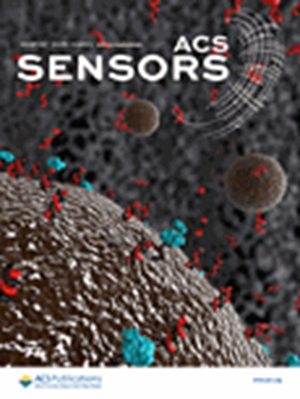Dual-Engineered Cellulosic Triboelectric Platforms with Ultrasensitive Alkaline Responsiveness for Real-Time Seafood Freshness Monitoring.
IF 9.1
1区 化学
Q1 CHEMISTRY, ANALYTICAL
引用次数: 0
Abstract
Achieving a synergy between structural stability and an ultrasensitive response to alkaline gases remains a key challenge in developing advanced gas-sensitive cellulosic triboelectric materials. Unlike conventional approaches relying on simple physical blending, this work introduces a novel coupling strategy combining in situ growth with defect engineering. The oxygen-containing groups on the cellulose skeleton coordinate with Zn2+, serving as nucleation sites for the in situ growth of zinc oxide (ZnO) nanoparticles, while acid vapor etching precisely creates defective regions. Theoretical calculations demonstrate that defective ZnO exhibits a 55.5% higher NH3 adsorption capacity than pristine ZnO. The resulting AZP3h-TENG achieves an exceptional detection limit of 5 ppm. Remarkably, even after 60 min of continuous rubbing under 30 N force, the ZnO nanoparticles remain firmly anchored to the fiber surfaces without significant detachment. Moreover, the output signal evolution of the triboelectric nanogenerator (TENG) in packaged microenvironments shows a strong correlation with the total volatile base nitrogen (TVB-N) levels in scallops during storage, highlighting its potential for real-time seafood freshness monitoring. This study provides a reliable and innovative strategy for designing ultrasensitive gas-sensitive cellulosic triboelectric materials, paving the way for self-powered, low-cost, and highly sensitive electronics in food safety applications.双工程纤维摩擦电平台与超灵敏的碱性响应,实时监测海鲜新鲜度。
实现结构稳定性和对碱性气体的超灵敏响应之间的协同作用仍然是开发先进气敏纤维素摩擦电材料的关键挑战。与传统的依赖于简单物理混合的方法不同,这项工作引入了一种将原位生长与缺陷工程相结合的新型耦合策略。纤维素骨架上的含氧基团与Zn2+配位,作为氧化锌纳米颗粒原位生长的成核位点,而酸蒸汽蚀刻则精确地产生缺陷区域。理论计算表明,缺陷ZnO对NH3的吸附能力比原始ZnO高55.5%。由此产生的AZP3h-TENG达到了5 ppm的异常检测限。值得注意的是,即使在30 N的力下连续摩擦60分钟后,ZnO纳米粒子仍然牢固地固定在纤维表面,没有明显的脱落。此外,摩擦电纳米发电机(TENG)在包装微环境中的输出信号演变与扇贝在储存过程中的总挥发性碱氮(TVB-N)水平有很强的相关性,突出了其在实时海鲜新鲜度监测中的潜力。这项研究为设计超灵敏气敏纤维摩擦电材料提供了可靠和创新的策略,为自供电、低成本和高灵敏度电子产品在食品安全中的应用铺平了道路。
本文章由计算机程序翻译,如有差异,请以英文原文为准。
求助全文
约1分钟内获得全文
求助全文
来源期刊

ACS Sensors
Chemical Engineering-Bioengineering
CiteScore
14.50
自引率
3.40%
发文量
372
期刊介绍:
ACS Sensors is a peer-reviewed research journal that focuses on the dissemination of new and original knowledge in the field of sensor science, particularly those that selectively sense chemical or biological species or processes. The journal covers a broad range of topics, including but not limited to biosensors, chemical sensors, gas sensors, intracellular sensors, single molecule sensors, cell chips, and microfluidic devices. It aims to publish articles that address conceptual advances in sensing technology applicable to various types of analytes or application papers that report on the use of existing sensing concepts in new ways or for new analytes.
 求助内容:
求助内容: 应助结果提醒方式:
应助结果提醒方式:


